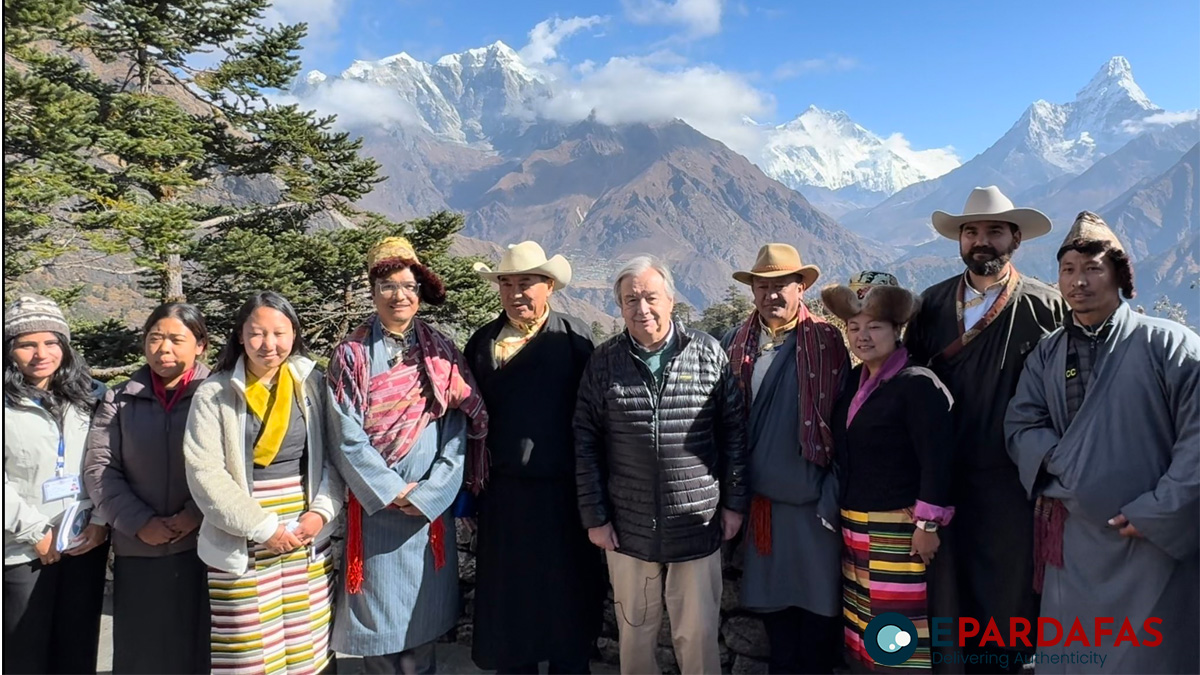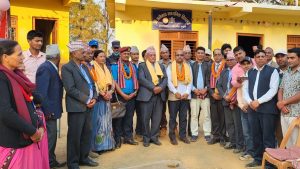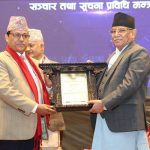
UN Secretary-General Antonio Guterres Visits Mount Everest Base Camp, Assures Justice for Nepal in Climate Crisis

Upon reaching the base camp on Mount Everest, the world’s highest peak, UN Secretary-General Antonio Guterres experienced an eventful helicopter ride that included a sudden descent over a large lake before landing safely at the base camp’s helipad. Waiting to welcome him were Himalayan Sherpas and cultural representatives adorned in traditional attire.
Stepping off the helicopter, Guterres took in the stunning vistas of the surrounding Setamme mountains and mountain ranges. He was soon greeted by Angchiring Sherpa, former president of the Nepal Mountaineering Association and current head of the Climate Alliance of Himalayan Communities.
While Guterres’ visit has concluded, the memory of his assurance to support Nepal in the face of climate change’s adverse impacts lingers with the Sherpa community. Sherpa, who once trekked these Himalayan mountains, recalled his astonishment that the Imja glacier, once an expansive ice lake, had transformed into a vast body of water.
Imja Himtal, which has now expanded to approximately 4 km in length and 1 km in width, was a cause for concern due to fears of glacial lake outburst floods. In response, the Nepalese army, with the support of the United Nations, lowered the lake’s water level by 3.5 meters to protect settlements downstream.
Guterres descended to the base camp after crossing this glacier and was briefed by Laxman Adhikari, the ward president, on local issues. Angchiring Sherpa provided detailed information on the changes occurring in the Himalayan region.
The Secretary-General spent two hours at the base camp, where he heard accounts of the effects of the climate crisis from local residents and leaders. His visit has instilled hope in the local government and communities, as he bore witness to the Himalayan region’s challenges and conveyed Nepal’s need for justice on the global stage. Nepal’s struggle, as a country with minimal contributions to the climate crisis, has been underscored by Guterres’ direct experience of the region.
During his visit, Guterres also reached the Annapurna base camp, where he continued to engage with the local population and expressed his commitment to bringing justice to Nepal. Subsequently, he visited Lumbini, the birthplace of Buddha.
Analyst Arun Subedi suggested that Nepal could have benefited from more assertively articulating its stance on climate change and its consequences during Guterres’ visit. Formally expressing its perspective could have enhanced the effectiveness of Nepal’s representation.
Secretary-General Guterres, who arrived in Kathmandu on Saturday night, returned to the United States on Wednesday afternoon. Throughout his visit, he met with leaders from all political parties, including the President and Prime Minister, and expressed a keen interest in climate change, transitional justice, and the peace process.














Comments